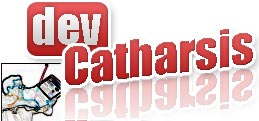I've started my career doing projects for a year or so. Then I switched to products for some years. Then back to projects. And again to products. And I'm currently back on projects. Do you notice a trend, or just an inconsistent career?
Now seriously, as so many things in live, the trends come tend to be circular. And we all have experience the cycle:
- a) this is the way to go, let's just use/build a product
- b) oops, the product customization is harder then we thought
- c) arghh, I'll never choose a product as long as I live
- d) projects are just too expensive, why not give products a chance?
Though circular, my opinion is that the cycle's trend tend to the product side. And the balance will finally start favoring product with the SaaS trend we are experiencing. After Salesforce success, Microsoft is jumping over the SaaS market with the
Office Live, a small business web site (external) and collaborative (internal) service. The SaaS rush will finally start!
Even the information systems will soon be implemented over solutions, not as custom-from-ground-up projects. And they won't be implemented by consultants, but by the business people - well, the very geek business people, but nevertheless, business people. And yes, one of the greater problem we have, the extraction of business processes will finally go away! But then so will our most of our jobs, won't they?
 After a very interesting debate over the role of software architecture over lunch, where we compared it against the role of the building architect, I friend of mine sent me this link: Worldwide Institute of Software Architecture.
After a very interesting debate over the role of software architecture over lunch, where we compared it against the role of the building architect, I friend of mine sent me this link: Worldwide Institute of Software Architecture.